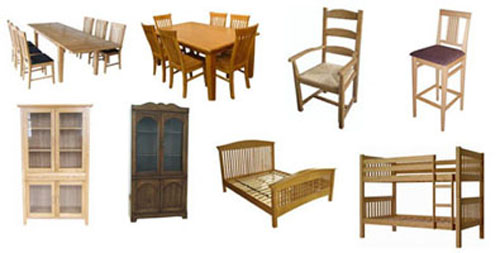1. L Types of Bed (single bed/ semi-double bed/ double bed and bunk beds, high beds): the bearing standard of the bed board is 180KGS.
Test method: put a 50CM * 100CM sand bag (180KGS) in the center of the bed board and the board should not be bent. For QC staff( 60kg) to walk on the bed to see whether to see if it is broken, and whether the number of the bedplate meet requests, or bed slats and MDF connections fit together seamlessly (the interspace shall not fit in a sheet of A4 paper). U-shaped gun nail shall be used when fixing the bed slats, and no long foot nails should be used. If the board is made of plywood, the QC should bend the board to do a test and judge the inner structure of the plywood board.
And the bearing standard for the bed screen is 60KGS. Test Method: put a sand bag (60KGS) in the center of bed screen bar for 0.5 hour, and the bar should not be bent.
Test Method: QC staff shall sit on the bed plate and move to the side and place strength on the center bar of the bed screen. Besides, the QC shall pull the bed screen outward with strength of 30KGS to see whether the bed rails and bed-screen were fixed properly.
Note: in accordance with the laws of Japan, the gap between the plates on the bed screen shall not be greater than 100MM. the bearing of the bed ladder is 150KGS. Test Method: QC staff to walk up and down and move around, and to separate the bed ladder feet and pedal by hand reversely. Check to see whether the connection between the foot and pedal is close. Note that the bed ladder pedal can not have any knots. And only iron wire wrapped with Styrofoam can be wrapped with tape.
2. Mattress (cloth): To check whether the color and material of the cloth and color match with the samples, and wipe the mattress with a white cloth back and forth for 5 to 10 times to see if the color faded. Whether the stitches are smooth and the threads exposed. And touch to check whether there is any needle or gun nail, as well as whether the surface is clean. And lie down to test the flexibility and balance of the sponge.
3. Student Desk: to test the stability. The minimum load-bearing standard of the table plate is 20KGS. Check to see whether the main board is deformed. And its upper shelves would have woolen felt attached to its bottom. Note that the color of the shelves and tables need to be consistent. The paint would generally be PU or UV, which are more smooth and hard to the touch. When checking, the QC should pull the legs to see whether the joints is sturdily built and tilt the desk for 30 degree to see whether it would fall down or not.
4. Cabinets (cabinets, drawers, wardrobe, and layer cabinet): Check the cabinet drawer headboard and sideboard to see whether they are vertical without bending, and whether the distance between each drawer head are the same. Quickly pull the drawer back and forth for 5 to 10 times to see whether the drawer wall and drawer head are installed properly, whether the rail is smooth, and whether the screws are loose. Check to see whether the caster can move smoothly and whether the brakes work. When packing, the Styrofoam shall be put between the drawer heads so as not to slide out drawer. Under the four corners of the drawer cabinet a triangle Corner, Corner general size 100MM * 100MM * 15MM) need to be added. Large drawer need to have a tie-bar at its bottom. When testing, the QC should press down with 15KGS strength. And for large drawer cabinet, on the back of the upper part will be added two triangle plates (each at one side). If the height of the cupboard is above 1200MM, a horizontal pull bar needs to be added. The QC needs to check whether the door is deformed, the switch is close together, the left and right are of the same height. Open and close the switch for 5 to 10 times to check whether the hinge is falling and the screws on the hinge are right in place. When it comes to glass doors, sometimes the buyers would ask for protection from both sides with Styrofoam. And for TV cabinet, the bearing standard is 100KGS and at least 3 TV sets could be put into it. Finally, for layer cabinet, check to see whether the screw nail would fit in the embedded hole and would not be so loose as to fall down. And the Shelves stacked need to be separated with EPE.
5. Dining Tables and Chairs: the load-bearing standard of the table panel is 100KGS. Test methods is for the QC staff (around 60kgs) to walk back and forth, meanwhile, the QC need to press the corner of the table to see whether there are other sides are tilted. When laid horizontally, the table is to go through a 20kg horizontal pushing test and will be pulled by the leg to see the strength of the joint. For a collapsible table, the bearing standard at the joint is 45KGS. According to the different length of the table, the back of the table panel need to be reinforced to reduce the occurrence of deformation.







I always spent my half an hour to read this tarot webpage’s
articles or reviews every day along with a mug of coffee.